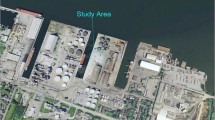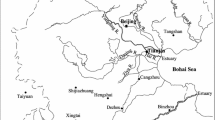Abstract
The construction of additional facilities at the Florida Power Corporation's Crystal River Energy Complex required an extensive stabilization program to construct foundations for approximately one half mile of cooling towers. This paper presents an overview of the techniques and methods used in the construction of additional facilities at the Crystal River Generating Station. Excavations for intake and discharge structures were to be more than 20 ft below the water table. Cooling tower foundations were constructed on extensively solutioned Florida limerock located on the central Gulf Coast of Florida. Hybrid ground modification techniques were used to stabilize soft or loose soils and solution features in the underlying limerock, allowing mat and spread footing foundations to be used for most of the facility. The ground modification techniques were used to detect, collapse, densify, and fill solution features below the structure foundations. The bearing capacity after ground modification was verified by field load tests. Subsurface investigations indicated that sheet pile excavations with grouted seals were the optimal technique for cofferdam excavations in the limerock formation. Existing collapsed caverns were encountered during construction of the cofferdam for the intake structure and the adjacent discharge structure, requiring a fast-track design change, considerable field coordination, and daily modifications to accommodate the varied conditions encountered. Tied-back soldier pile cofferdam construction was combined with grouting, underwater excavation, and a massive, unreinforced, concrete tremie slab with grouted anchors, and installed off a barge to provide a dewatered excavation. This project involved the use of hybrid soil-rock anchors to anchor one of the largest continuous placement tremie seals installed in Florida. Other excavations used sheeting and grouting of the underlying limerock formation to provide a dewatered excavation. Ground modification techniques were used to treat a filled cavern discovered in the corner of one discharge structure. The entire construction of this facility was confined to a narrow work area by existing wetlands and the generating station discharge canal. Strict environmental restrictions required by the regulatory agencies to prevent impacts to the surrounding area were imposed on this project.
Similar content being viewed by others
Author information
Authors and Affiliations
Rights and permissions
About this article
Cite this article
Almaleh, L.J., Grob, J.D. & Gorny, R.H. Ground Stabilization for foundation and excavation construction in Florida karst topography. Geo 22, 308–313 (1993). https://doi.org/10.1007/BF00767502
Received:
Accepted:
Issue Date:
DOI: https://doi.org/10.1007/BF00767502




